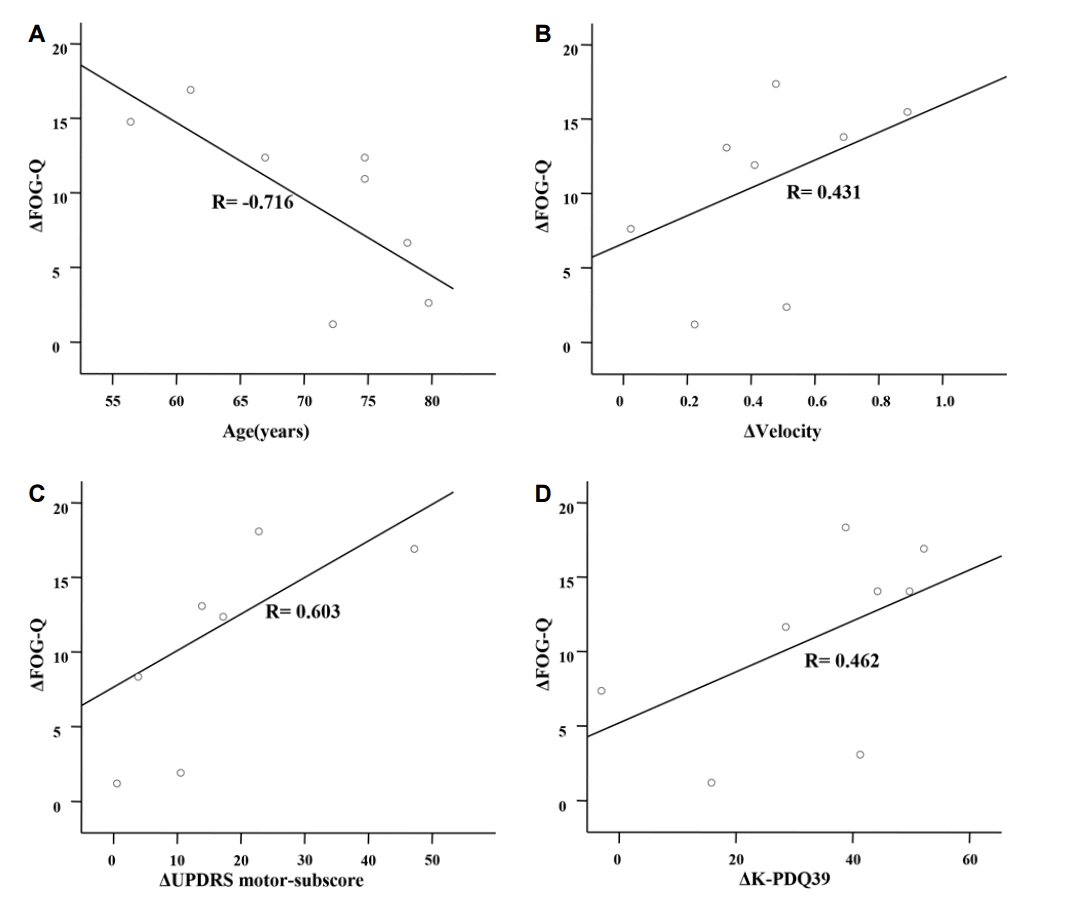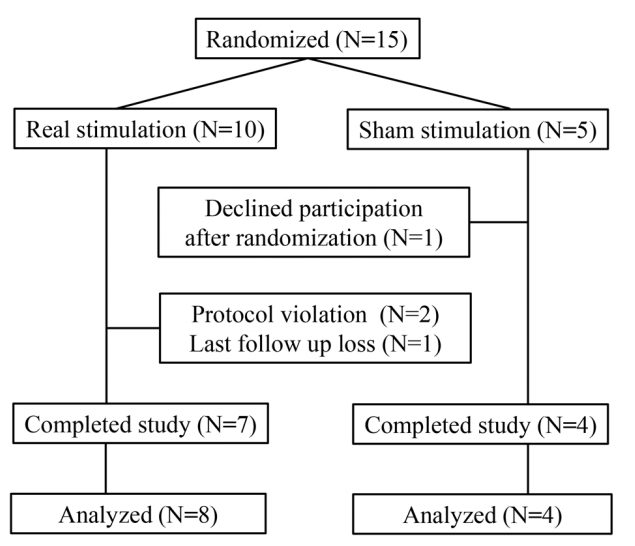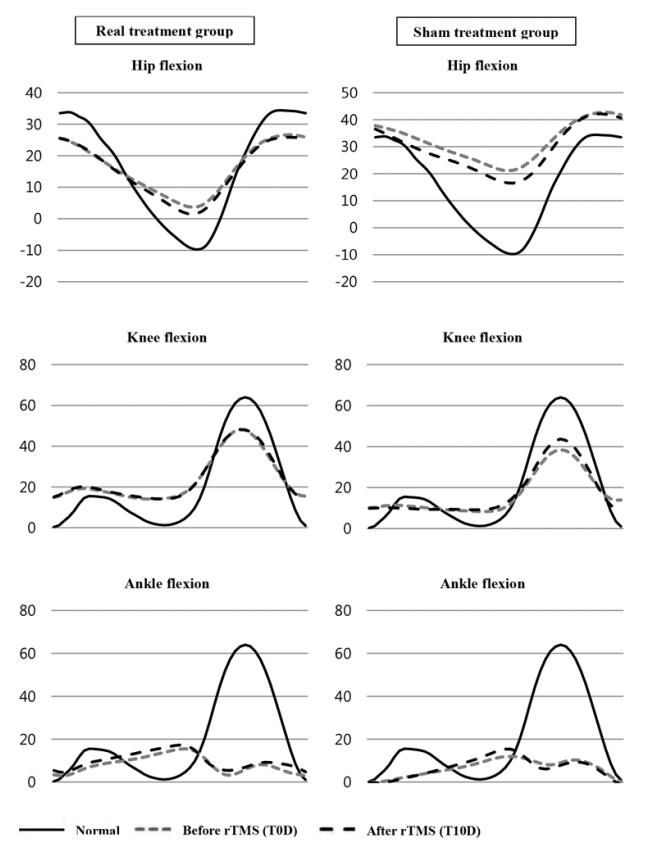1. Bloem BR, Hausdorff JM, Visser JE, Giladi N. Falls and freezing of gait in Parkinson’s disease: a review of two interconnected, episodic phenomena.
Mov Disord 2004;19:871-884.

2. Fahn S. The freezing phenomenon in parkinsonism. Adv Neurol 1995;67:53-63.
3. Giladi N, Kao R, Fahn S. Freezing phenomenon in patients with parkinsonian syndromes.
Mov Disord 1997;12:302-305.

4. Ambani LM, Van Woert MH. Start hesitation: a side effect of long-term levodopa therapy.
N Engl J Med 1973;288:1113-1115.

5. Espay AJ, Fasano A, van Nuenen BF, Payne MM, Snijders AH, Bloem BR. “On” state freezing of gait in Parkinson’s disease: a paradoxical levodopa-induced complication.
Neurology 2012;78:454-457.

6. Okuma Y. Freezing of gait in Parkinson’s disease.
J Neurol 2006;253:27-32.

7. Wassermann EM, Lisanby SH. Therapeutic application of repetitive transcranial magnetic stimulation: a review.
Clin Neurophysiol 2001;112:1367-1377.

8. George MS, Nahas Z, Kozel FA, Li X, Denslow S, Yamanaka K, et al. Mechanisms and state of the art of transcranial magnetic stimulation.
J ECT 2002;18:170-181.

9. Ellaway PH, Davey NJ, Maskill DW, Dick JP. The relation between bradykinesia and excitability of the motor cortex assessed using transcranial magnetic stimulation in normal and parkinsonian subjects.
Electroencephalogr Clin Neurophysiol 1995;97:169-178.

10. Khedr EM, Farweez HM, Islam H. Therapeutic effect of repetitive transcranial magnetic stimulation on motor function in Parkinson’s disease patients.
Eur J Neurol 2003;10:567-572.

11. Pascual-Leone A, Valls-Sole J, Brasil-Neto JP, Cammarota A, Grafman J, Hallet M. Akinesia in Parkinson’s diseases. II. Effects of subthreshold repetitive transcranial motor cortex stimulation.
Neurology 1994;44:892-898.

12. Khedr EM, Rothwell JC, Shawky OA, Ahmed MA, Hamdy A. Effect of daily repetitive transcranial magnetic stimulation on motor performance in Parkinson’s disease.
Mov Disord 2006;21:2201-2205.

13. Benninger DH, Iseki K, Kranick S, Luckenbaugh DA, Houdayer E, Hallet M. Controlled study of 50-Hz repetitive transcranial magnetic stimulation for the treatment of Parkinson disease.
Neurorehabil Neural Repair 2012;26:1096-1105.

14. Rektorova I, Sedlackova S, Telecka S, Hlubocky A, Rektor I. Repetitive transcranial stimulation for freezing of gait in Parkinson’s disease.
Mov Disord 2007;22:1518-1519.

15. Koh SB, Kim JW, Ma HI, Ahn TB, Cho JW, Lee PH, et al. Validation of the Korean-version of the nonmotor symptoms scale for Parkinson’s disease.
J Clin Neurol 2012;8:276-283.

16. Cole MH, Silburn PA, Wood JM, Worringham CJ, Kerr GK. Falls in Parkinson’s disease: kinematic evidence for impaired head and trunk control.
Mov Disord 2010;25:2369-2378.

17. Delval A, Salleron J, Bourriez JL, Bleuse S, Moreau C, Krystkowiak P, et al. Kinematic angular parameters in PD: reliability of joint angle curves and comparison with healthy subjects.
Gait Posture 2008;28:495-501.

18. Roiz Rde M, Cacho EW, Pazinatto MM, Reis JG, Cliquet A Jr, Barasnevicius-Quagliato EM. Gait analysis comparing Parkinson’s disease with healthy elderly subjects.
Arq Neuropsiquiatr 2010;68:81-86.

19. Arias P, Vivas J, Grieve KL, Cudeiro J. Controlled trial on the effect of 10 days low-frequency repetitive transcranial magnetic stimulation (rTMS) on motor signs in Parkinson’s disease.
Mov Disord 2010;25:1830-1838.

20. Pascual-Leone A, Amedi A, Fregni F, Merabet LB. The plastic human brain cortex.
Annu Rev Neurosci 2005;28:377-401.

21. Yip CW, Cheong PW, Green A, Prakash PK, Fook-Cheong SK, Tan EK. A prospective pilot study of repetitive transcranial magnetic stimulation for gait dysfunction in vascular parkinsonism.
Clin Neurol Neurosurg 2013;115:887-891.

22. Lomarev MP, Kanchana S, Bara-Jimenez W, Iyer M, Wassermann EM, Hallett M. Placebo-controlled study of rTMS for the treatment of Parkinson’s disease.
Mov Disord 2006;21:325-331.

23. Huang YZ, Rothwell JC, Edwards MJ, Chen RS. Effect of physiological activity on an NMDA-dependent form of cortical plasticity in human.
Cereb Cortex 2008;18:563-570.

24. Wang HY, Crupi D, Liu J, Stucky A, Cruciata G, Di Rocco A, et al. Repetitive transcranial magnetic stimulation enhances BDNF-TrkB signaling in both brain and lymphocyte.
J Neurosci 2011;31:11044-11054.

25. Fisher BE, Wu AD, Salem GJ, Song J, Lin CH, Yip J, et al. The effect of exercise training in improving motor performance and corticomotor excitability in people with early Parkinson’s disease.
Arch Phys Med Rehabil 2008;89:1221-1229.

26. Yang YR, Tseng CY, Chiou SY, Liao KK, Cheng SJ, Lai KL, et al. Combination of rTMS and treadmill training modulates corticomotor inhibition and improves walking in Parkinson disease: a randomized trial.
Neurorehabil Neural Repair 2013;27:79-86.

27. Marié RM, Barré L, Dupuy B, Viader F, Defer G, Baron JC. Relationships between striatal dopamine denervation and frontal executive tests in Parkinson’s disease.
Neurosci Lett 1999;260:77-80.

28. Mattay VS, Tessitore A, Callicott JH, Bertolino A, Goldberg TE, Chase TN, et al. Dopaminergic modulation of cortical function in patients with Parkinson’s disease.
Ann Neurol 2002;51:156-164.

29. Suppa A, Iezzi E, Conte A, Belvisi D, Marsili L, Modugno N, et al. Dopamine influences primary motor cortex plasticity and dorsal premotor-to-motor connectivity in Parkinson’s disease.
Cereb Cortex 2010;20:2224-2233.

30. Giladi N, Shabtai H, Simon ES, Biran S, Tal J, Korczyn AD. Construction of freezing of gait questionnaire for patients with Parkinsonism.
Parkinsonism Relat Disord 2000;6:165-170.

31. Lefaucheur JP, Drouot X, Menard-Lefaucheur I, Zerah F, Bendib B, Cesaro P, et al. Neurogenic pain relief by repetitive transcranial magnetic cortical stimulation depends on the origin and the site of pain.
J Neurol Neurosurg Psychiatry 2004;75:612-616.

32. Lima MC, Fregni F. Motor cortex stimulation for chronic pain: systematic review and meta-analysis of the literature.
Neurology 2008;70:2329-2337.

33. Koski L, Paus T. Functional connectivity of the anterior cingulate cortex within the human frontal lobe: a brain-mapping meta-analysis.
Exp Brain Res 2000;133:55-65.

34. Cheeran B, Talelli P, Mori F, Koch G, Suppa A, Edwards M, et al. A common polymorphism in the brain-derived neurotrophic factor gene (BDNF) modulates human cortical plasticity and the response to rTMS.
J Physiol 2008;586:5717-5725.








 PDF Links
PDF Links PubReader
PubReader ePub Link
ePub Link Full text via DOI
Full text via DOI Download Citation
Download Citation Print
Print



